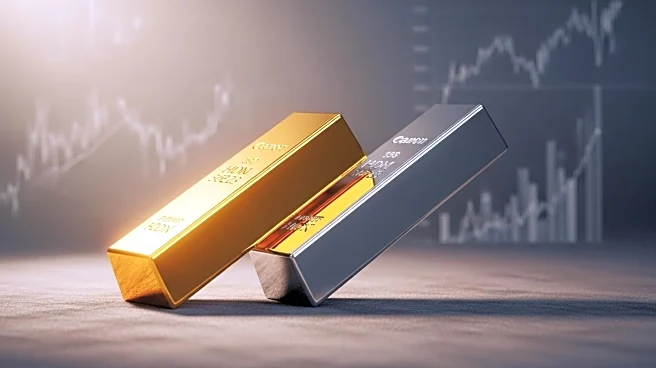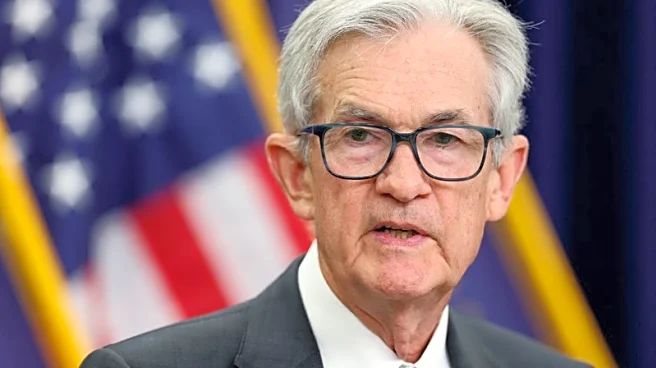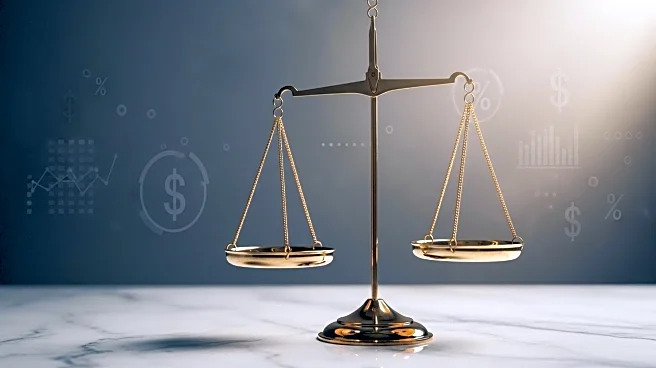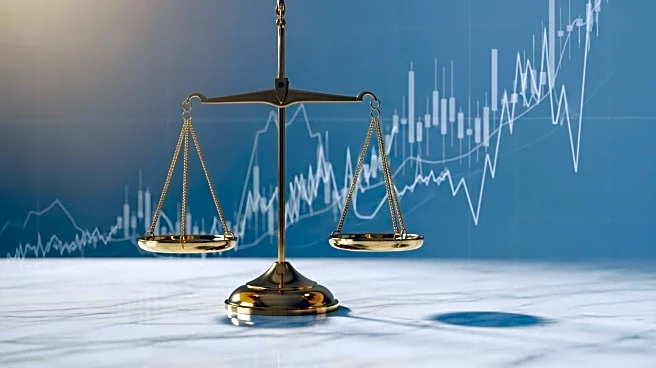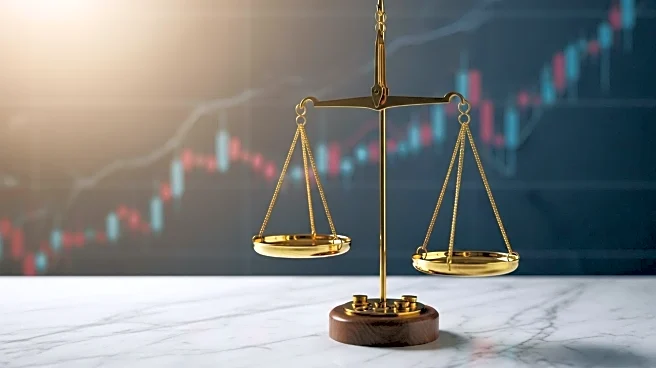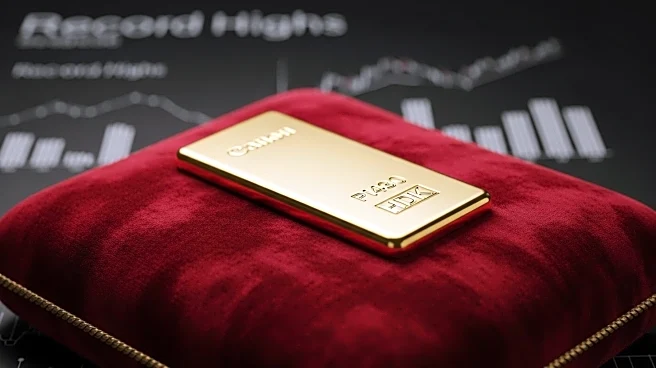What's Happening?
Gold prices have surged to new heights, driven by expectations of an upcoming interest rate cut by the Federal Reserve. The precious metal has seen a 1.12% gain this week, marking its fourth consecutive weekly increase. This rise is attributed to the anticipation of a rate reduction at the Federal Open Market Committee (FOMC) meeting, which is expected to be the first in twelve months. Gold futures have reached a peak of $3,700, a significant milestone that underscores its role as a hedge against monetary policy changes. Meanwhile, silver has also experienced a notable increase, closing at $42.83, the highest in nearly thirteen years. The market is closely watching Federal Reserve Chairman Jerome Powell's upcoming commentary, which will likely influence the future trajectory of gold prices.
Why It's Important?
The rise in gold and silver prices highlights the market's sensitivity to Federal Reserve policies, particularly interest rate decisions. Lower interest rates typically weaken the U.S. dollar, making gold more attractive as an investment. This trend benefits investors seeking to protect their portfolios against inflation and currency fluctuations. Additionally, the increase in silver prices suggests a shift in investor preference towards more accessible precious metals as gold becomes more expensive. This dynamic could lead to sustained demand for silver, further impacting the precious metals market. The broader economic implications include potential shifts in investment strategies and portfolio diversification as investors respond to changing monetary policies.
What's Next?
The upcoming FOMC meeting and Chairman Powell's statements will be pivotal in determining the future direction of gold and silver prices. Market participants will be looking for signals regarding the extent and timing of interest rate cuts. A more aggressive rate reduction could further boost precious metal prices, while a conservative approach might temper the current rally. Investors will also monitor global economic conditions and geopolitical risks, which could influence the demand for safe-haven assets like gold and silver.
